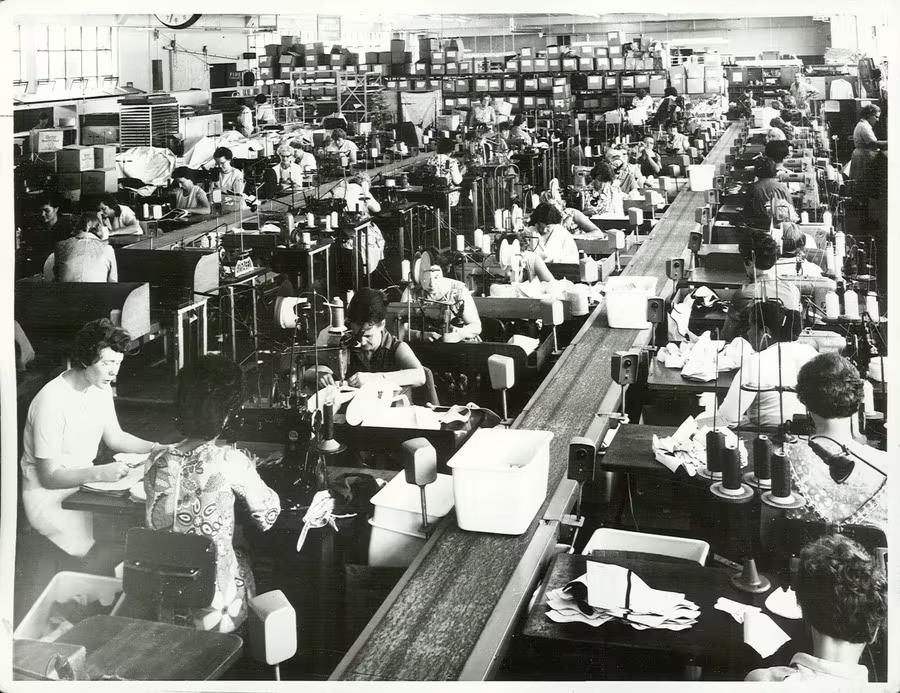
How automation will change our workforce
Around the world, there is increasing interest and concern about the potential effect of technology, specifically automation, on employment. Since releasing our Megatrends report in 2018, we’ve undertaken modelling to help several clients understand the effect of automation on their area . In this article, we consider how technology has affected employment historically, where it’s heading, and use our work for ATEED in Auckland as a case study to highlight the potential future changes.
Technological change isn’t new
Technological change has been a constant force throughout history and, despite often being perceived as a threat to workers at the time, has generally been positive in terms of economic outcomes. With the aid of technology, the workforce has shifted from manual labour in the primary sector, to semi-skilled work in the secondary sectors, and latterly into services, both low and highly skilled. The chart below quantifies this shift in New Zealand over the relatively short timeframe since 2000.

Future change is just like the past, mostly
Automation technology isn’t particularly unique in the context of historical technological change, although there are a couple of differences to bear in mind. Firstly, upcoming technological change will affect roles, even highly-skilled ones, in the services sector, an area that has traditionally been highly dependent on labour and less capital-intensive than other parts of the economy.
Secondly, the pace of change might increase, especially in digitally enabled applications that can leverage previous technology adoption. For example, personal computers (PCs) became commercially available in 1975 and took 16 years to reach 25% of the US population. However, after the internet was introduced in 1991, it only took seven years to achieve the same level of penetration, because it leveraged the prior adoption of PCs1 .
Change is complex
Although technological change undoubtedly displaces jobs, the overall net effect of technology tends to be positive. Implementation of technology can reduce the cost of products, spurring on additional demand and growing employment in higher-value areas. For example, the introduction of computer programs freed up accountants from manual preparation of journals and ledgers and enabled more time to be spent doing detailed financial analysis. Shifting workers onto higher-value tasks can lead to higher incomes and different patterns of consumption. Through complex feedback mechanisms, technological change in one industry can spur demand in seemingly unrelated industries.
Modelling the complexity
We’ve developed a modelling approach to understand the complexity of technological change. Our regional industry econometric model forecasts employment to 2024, considering economic momentum and stages of the business cycle. From 2024 to 2029, our general equilibrium (ESSAM) model takes over, modelling interdependencies in the economy, such as the way that price changes in one industry flow through to others. This process tells us how employment by industry and occupation might change under business-as-usual (BAU) adoption of technology. We then repeat the exercise, considering the effects of accelerated adoption of automation technology.
How accelerated automation might affect Auckland
We worked with ATEED and MartinJenkins to explore the effect of technological change on employment in Auckland.
Total employment in the city is expected to grow by 23% by 2029 under both BAU and Accelerated Automation scenarios. The historic rate of shift from lower to higher-skilled occupations is expected to continue under BAU, but it would gather pace under the Accelerated Automation scenario. The chart below shows that the numbers of chief executives, general managers, and legislators are expected to grow strongly, with 6,230 additional jobs between now and 2029 under BAU, rising to 11,450 under Accelerated Automation. Conversely, roles set to shrink under BAU, such as general clerks, are expected to decline faster under Accelerated Automation.

Technician and trades roles are expected to grow strongly, but more as a function of demand from a growing population rather than technology. By 2029, employment in construction-related trades is expected to grow by 20,000, and food trades jobs are predicted to increase by 5,000.
These findings are a function of Auckland’s specific economic make-up, and are underpinned by a strongly growing, youthful population. Because of the importance of feedback mechanisms, modelling is required to ascertain the potential effects in other areas.
Beyond 2030
Technological change will continue, of course! Current and imminent automation technology seems likely to be limited to structured environments, augmenting rather than replacing humans. By 2030, we can expect technology that is more fully autonomous and can be applied in more unstructured environments. If 2020 means autonomous forklifts operating in factories, then 2030 will be autonomous cars overtaking you on the motorway.
Get in touch
We’d love to help you understand the potential effect of automation on your region or industry. Please get in touch if you’d like to know more.

























